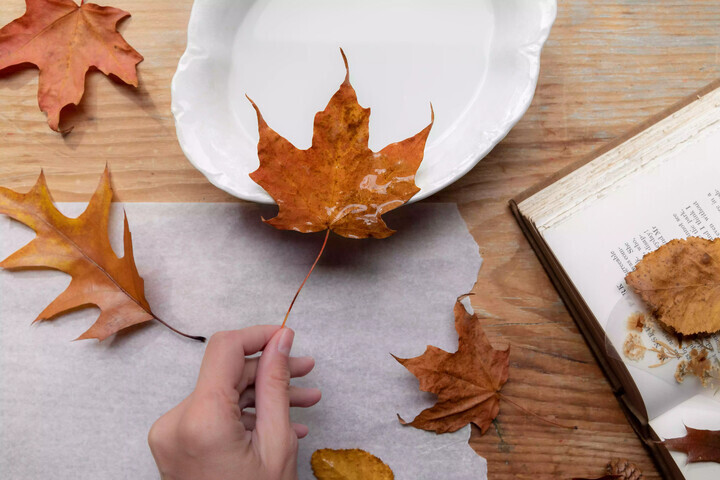Many plants put on a beautiful display of colors with their fall foliage in shades of red, orange, gold, and more. You can make this beauty last longer by preserving the leaves. Pressed and preserved leaves are excellent for decorating mantles, using as centerpieces, and more. This is fairly quick and easy to do, and there are five basic leaf preservation methods to choose from.
Pressing Leaves With Heavy Books
Pressing leaves with weight is the simplest method of saving fall leaves, but the leaves won't last as long as other preservation methods. For pressing, choose leaves that are flat and thin with a low moisture content, and collect some of your heaviest books.
If you would like a more supple pressed leaf, soak the leaf in diluted fabric softener before pressing. Or you can coat the surface of the leaf with a light layer of petroleum jelly prior to pressing.
Sandwich the leaves between sheets of wax paper or newspaper.
Place the sandwiched leaves inside a heavy book. You can stack other books or heavy objects on top to add more weight if necessary.
Keep the book in a dry location. Check the pressing after about a week to make sure the leaves are drying and not rotting. You will probably need to press for at least two weeks before the leaves are completely dry.
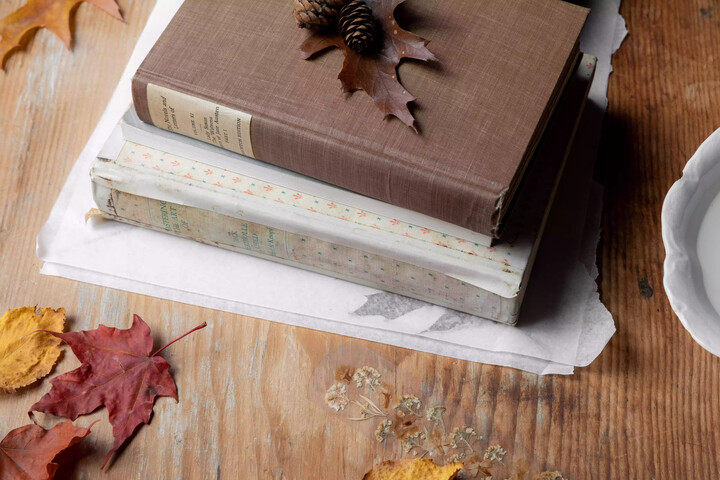
Preserving Leaves With Wax Paper
Using wax paper to preserve leaves is a popular and simple method, and these leaves will last for several months. You'll need an iron and ironing board for this method.
Choose thin leaves with a low moisture content.
Sandwich the leaves between two sheets of wax paper.
Cover your ironing board with a rag, so you don't get wax on the board.
Place the sandwiched leaves on top of the rag.
Place another rag on top of the sandwiched leaves.
Heat the iron to high. Do not use steam.
Slowly run the iron back and forth over the rag. Don't press too hard, or the leaves will shift. Once the wax paper has begun to seal, use the full weight of the iron and hold it for about 5 seconds on each part of the paper.
Check to see whether the wax paper sheets have fully melted together and sealed the leaves. If they haven't, iron for slightly longer.
Allow the wax paper to cool. Then, cut out the individual leaves. Leave a small margin around the leaves, so the wax paper stays sealed.
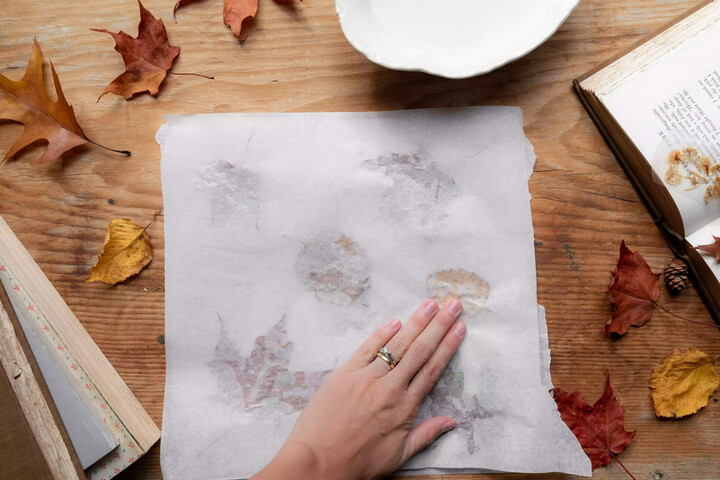
Drying Leaves in the Microwave
You can use a microwave to quickly dry leaves. However, the leaves can catch fire if you microwave them for too long. Constantly monitor the leaves, and microwave in short bursts.
Choose leaves that are still fresh and supple. Avoid dry fallen leaves.
Sandwich individual leaves or small, flat sprays of leaves between two paper towels.
Place the sandwiched leaves on a microwavable dish, and put it in the microwave.
Microwave for 30 seconds at medium heat, and check the leaves. If the leaves are not yet dry, keep microwaving in 30-second intervals until they are dry.
Spray the leaves with acrylic sealant on both sides to preserve the color.
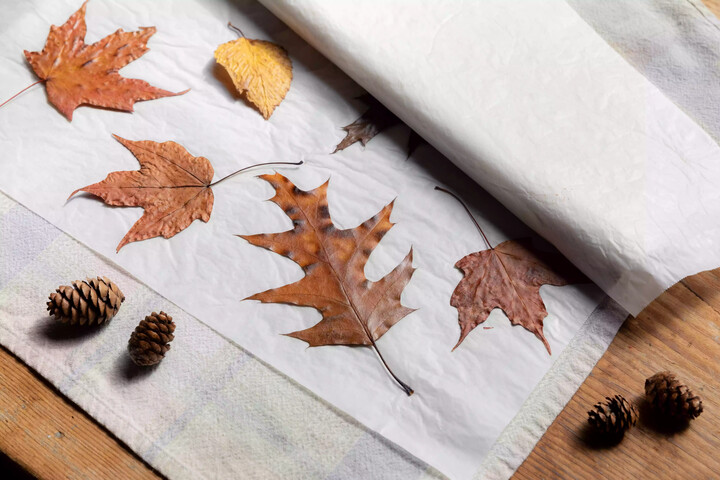
Preserving Fall Leaves With Silica Gel
Silica gel is a white powder that looks like salt. It's great for absorbing moisture, and it speeds up the leaf drying process. It can even work on thick, moist leaves. You can find boxes of silica gel in craft stores.
Select leaves that are still somewhat moist and supple.
Place about a 1-inch layer of silica gel in the bottom of a microwavable dish.
Place the leaves flat on top of the silica gel, leaving space between the leaves and the sides of the dish.
Completely cover the leaves with another inch of silica gel.
Place the uncovered dish in the microwave, and microwave at medium heat in 30-second intervals until the leaves are dry.
Let the leaves cool. Seal them with an acrylic spray if you wish to make them last longer.
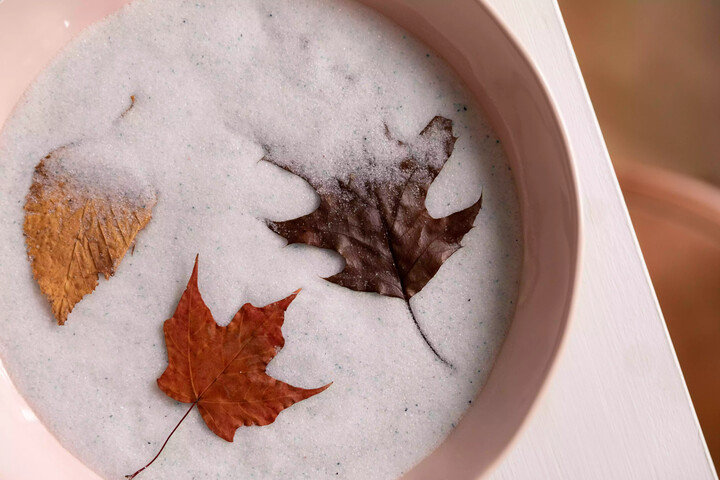
Preserving Fall Leaves With Glycerin
Preserving leaves with glycerin is the best way to keep them supple and flexible, and they can remain so for years. Glycerin-treated leaves can be used for many crafts, including wreaths, garlands, and table accents. You can find glycerin at health food stores, craft stores, and online retailers.
In a shallow pan, mix a solution of one part glycerin to two parts water.
Place your leaves into the solution.
Weigh down the leaves with another pan or dish, so they are totally submerged.
Check the leaves in two to three days. They should be soft and pliable. If the leaves feel dry, then leave them in the solution for another two to three days.
When the leaves are supple, remove them from the solution. Hang them to dry.
